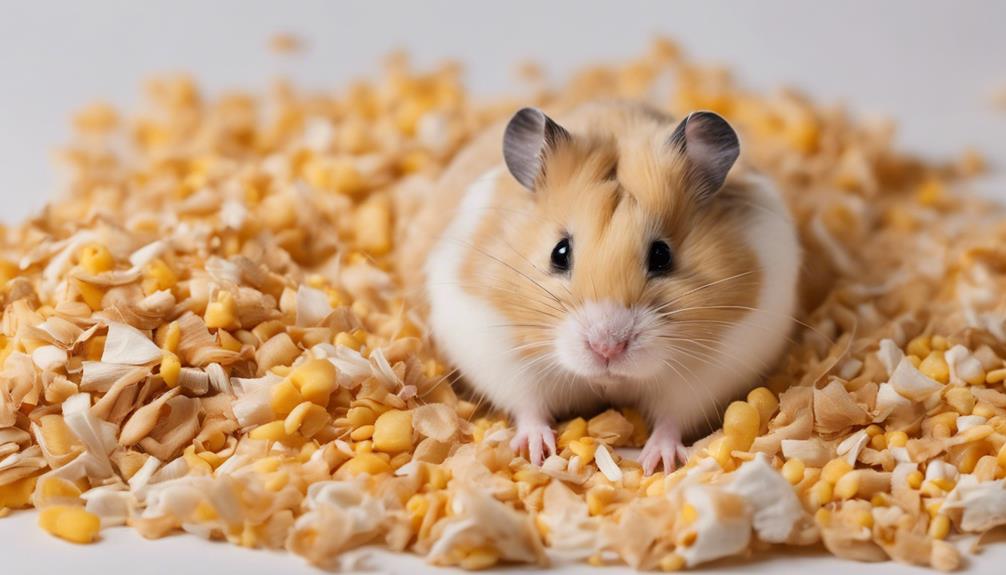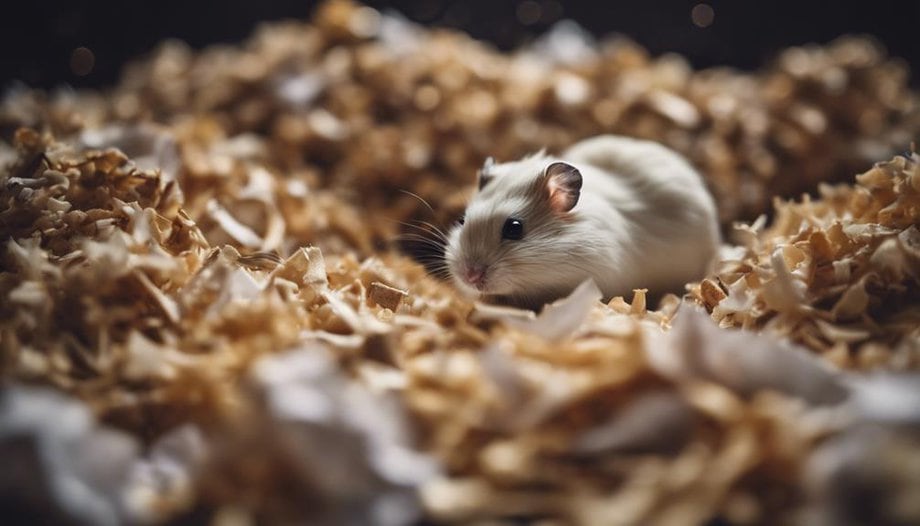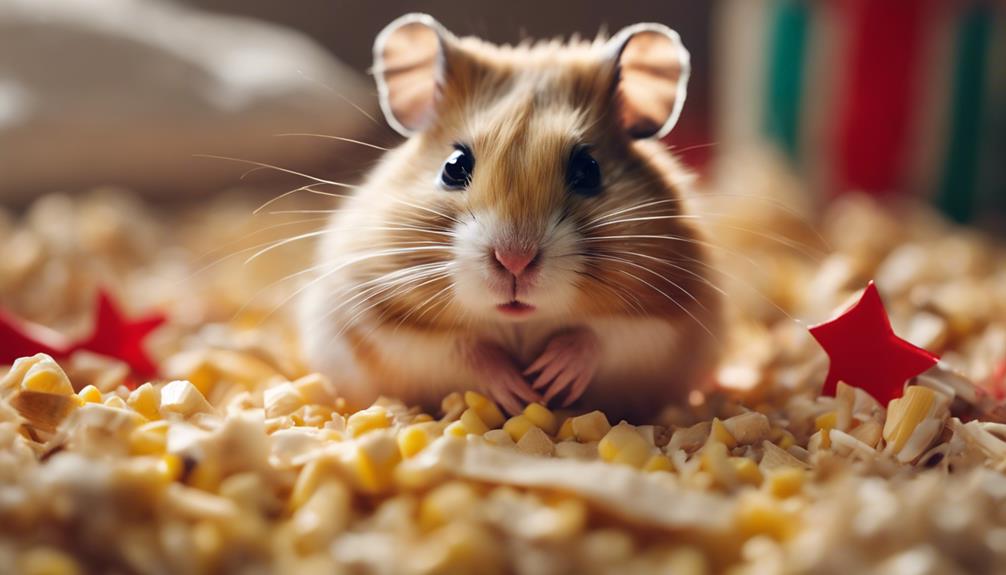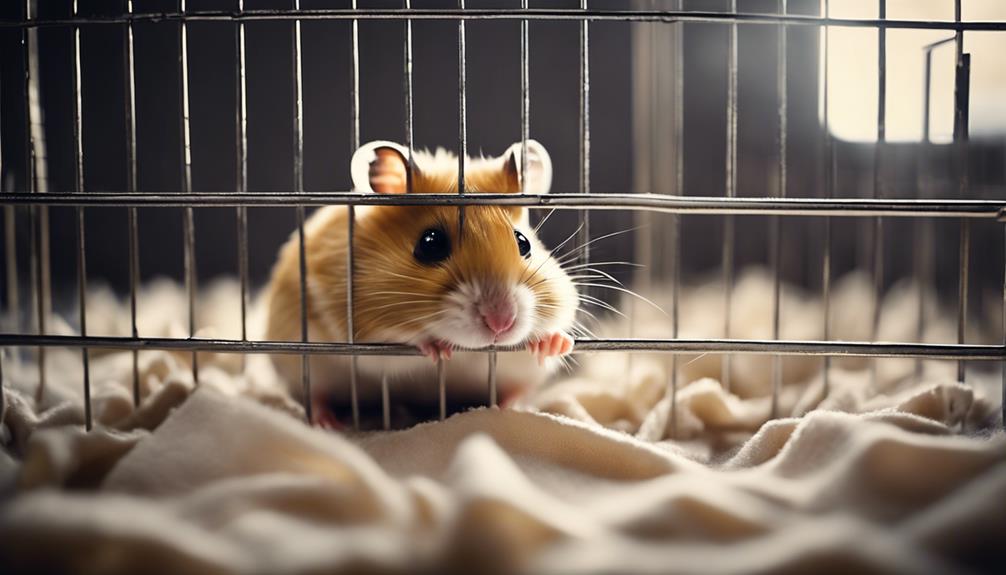How to Choose the Right Bedding for Your Hamster's Species

When it comes to choosing the right bedding for your hamster, it's essential to consider your hamster's species. Different species of hamsters have distinct preferences and needs when it comes to bedding material. Syrian hamsters, for example, prefer a thicker bedding material that they can burrow in, such as aspen shavings or paper-based bedding. Dwarf hamsters, on the other hand, require a softer and finer bedding material to prevent any injuries to their delicate skin and feet. Bedding options for dwarf hamsters include paper-based bedding or aspen shavings. It's crucial to research your hamster's species to ensure you provide the most suitable bedding for their comfort and well-being.
Hamsters are sensitive animals, and the right bedding can contribute significantly to their overall health and happiness. By selecting the appropriate bedding material based on your hamster's species, you can create a comfortable and safe environment for your furry friend to thrive in. Remember to regularly clean and replace the bedding to maintain a hygienic living space for your hamster. Your hamster will thank you with its playful antics and contented squeaks in its cozy bedding-filled home.
Understanding Your Hamster's Species
Understanding the unique characteristics of your hamster's species is essential for creating a suitable and enriching environment for your furry companion. Each species of hamster has its own distinct behaviors and habitat requirements that must be taken into consideration when setting up their living space.
For instance, Syrian hamsters are solitary creatures and should always be housed alone to prevent any territorial conflicts. On the other hand, dwarf hamsters are more social and can be kept in pairs or small groups as long as they're introduced properly.
When it comes to habitat requirements, it's crucial to provide enough space for your hamster to exercise and explore. Syrian hamsters, being larger in size, require a bigger cage with ample room for running on their wheel and burrowing. Dwarf hamsters, on the other hand, are smaller and can do well in a slightly smaller enclosure, but still need plenty of toys and tunnels to satisfy their curious nature.
Factors to Consider for Bedding
When selecting bedding for your hamster, it's crucial to consider factors such as material safety, absorbency, and comfort to ensure a cozy and hygienic environment for your furry friend. Bedding absorption plays a vital role in maintaining cleanliness and preventing odors in your hamster's habitat. Opt for bedding materials that can efficiently absorb moisture to keep the cage dry and odor-free.
Additionally, pay attention to the texture of the bedding to provide your hamster with a comfortable living space. Soft and fluffy bedding can offer a cozy surface for your pet to burrow and nestle in, promoting a sense of security and well-being. Avoid rough or harsh textures that may cause discomfort or skin irritation to your hamster.
Bedding Options for Burrowing Hamsters

To cater to the burrowing instincts of hamsters, selecting bedding that facilitates their natural behaviors is essential for their well-being and enrichment. Burrowing hamsters, like Syrian or Roborovski species, exhibit a strong inclination towards digging behavior as part of their natural instincts. Providing them with suitable bedding options is crucial to ensure they can engage in this behavior comfortably.
Wood shavings, aspen, or paper-based bedding are ideal choices for burrowing hamsters as they're soft, absorbent, and safe for these small creatures. These bedding materials not only mimic the hamster's natural habitat but also allow them to create tunnels and burrows, promoting physical exercise and mental stimulation.
When setting up the cage for a burrowing hamster, ensure a bedding depth of at least 5-6 inches to accommodate their digging tendencies adequately. Regularly spot clean the bedding and change it entirely every few weeks to maintain cleanliness and hygiene. By selecting appropriate bedding that aligns with their burrowing instincts, you provide your hamster with a comfortable and enriching environment that supports their natural behaviors.
Bedding Options for Non-Burrowing Hamsters
In contrast to their burrowing counterparts, non-burrowing hamsters have distinct bedding needs that cater to their different behavioral preferences and requirements. While burrowing hamsters thrive on deep, substrate-filled environments, non-burrowing species such as Syrian hamsters or Chinese hamsters prefer a different setup. For these hamsters, bedding enrichment is key. Providing nesting materials like shredded paper, hay, or safe commercial nesting products allows them to create cozy nests and satisfy their natural instincts.
When selecting bedding alternatives for non-burrowing hamsters, materials that promote comfort and cleanliness are essential. Aspen shavings, paper-based bedding, or hemp bedding are popular choices that provide a soft and absorbent surface for your pet. Regular spot cleaning is crucial to maintain hygiene in their living space. Removing soiled bedding and replenishing with fresh material helps prevent odors and keeps your hamster healthy and happy.
Safe Bedding Materials to Avoid

Choosing the appropriate bedding materials is crucial to ensure the safety and well-being of your non-burrowing hamster. When considering bedding options, it is essential to steer clear of materials that can pose risks to your pet's respiratory health or contain toxic elements. To help you make informed decisions, here are some safe bedding materials to avoid:
| Bedding Material | Reasons to Avoid |
|---|---|
| Cedar Shavings | Emit strong aromatic oils harmful to hamsters' lungs |
| Pine Shavings | Release phenols that can cause respiratory issues |
| Cat Litter | Contains clumping agents dangerous if ingested |
| Corn Cob Bedding | May harbor mold and bacteria detrimental to health |
Opting for alternatives like aspen or paper-based bedding can significantly reduce the chances of bedding toxicity and promote a healthier environment for your hamster. By staying vigilant and prioritizing your pet's well-being, you can prevent potential respiratory complications and ensure a safe and comfortable habitat for your furry friend.
Allergies and Sensitivities to Watch For
It's paramount for hamster owners to remain observant for any signs of allergies or sensitivities their furry companions may exhibit towards bedding materials. Hamsters, like humans, can have reactions to certain substances, and being aware of these potential issues can help ensure the well-being of your pet.
Here are some key points to consider:
- Bedding material allergies: Some hamsters may be allergic to specific bedding materials such as cedar or pine shavings. Watch out for symptoms like sneezing, itching, or skin redness, and consider switching to alternative options like aspen or paper-based bedding.
- Sensitivities to scented bedding: While scented bedding may seem appealing to humans, it can be overwhelming for hamsters. Strong fragrances in bedding can irritate their sensitive respiratory systems, leading to discomfort or respiratory issues. Opt for unscented bedding to prevent any potential sensitivities.
- Monitoring reactions: Keep a close eye on your hamster's behavior and health when introducing new bedding materials. If you notice any adverse reactions, promptly remove the bedding and consult with a veterinarian to address any concerns.
Tips for Bedding Maintenance

When tending to your hamster's bedding, ensuring proper maintenance is key to promoting a clean and healthy environment for your furry friend. Odor control plays a vital role in keeping your hamster's living space pleasant. To tackle this, consider spot-cleaning the bedding regularly to remove any wet spots or heavily soiled areas. Additionally, changing the bedding entirely on a weekly basis can help combat odors effectively.
Cleaning frequency is another crucial aspect of bedding maintenance. By establishing a routine cleaning schedule, you can prevent the buildup of bacteria and keep your hamster's habitat fresh. Regularly removing droppings, uneaten food, and soiled bedding can contribute to a hygienic environment for your pet.
Consulting a Veterinarian for Guidance
For expert advice on hamster care, seeking guidance from a veterinarian is paramount to ensure the well-being of your furry companion. Veterinarians possess the knowledge and experience necessary to provide tailored recommendations for your hamster's specific needs, including bedding choices.
When consulting a veterinarian regarding bedding for your hamster, consider the following:
- Bedding Alternatives: Veterinarians can offer insights into various bedding alternatives available in the market, helping you select the most suitable option based on your hamster's species and health requirements.
- Health Implications: By consulting a veterinarian, you can learn about the potential health implications associated with different types of bedding, allowing you to make an informed decision that promotes your hamster's well-being.
- Bedding Customization: Veterinarians can advise on bedding customization to enhance your hamster's living environment, providing enrichment benefits that contribute to your pet's mental and physical stimulation.
Frequently Asked Questions
Can I Use the Same Bedding for My Hamster as I Do for My Guinea Pig or Rabbit?
When considering bedding absorption and odor control, it is vital to select the appropriate materials for different small pets. While some bedding can be used interchangeably, it's wise to tailor choices to each species' specific needs.
How Often Should I Completely Change Out My Hamster's Bedding?
In the realm of bedding maintenance, odor control is key in ensuring a cozy abode for your furry friend. Consider eco-friendly alternatives for sustainability. Change out your hamster's bedding completely every 1-2 weeks to maintain cleanliness and freshness.
Are There Any Specific Bedding Materials That Can Help Prevent Certain Health Issues in Hamsters?
Choosing the right bedding materials for hamsters can have significant health benefits. Some species-specific options, like aspen shavings for Syrian hamsters, can help prevent respiratory issues. Prioritizing suitable bedding can enhance a hamster's overall well-being.
What Are Some Signs That My Hamster May Be Allergic to Their Bedding?
If a hamster shows allergy symptoms like sneezing or itching, consider alternatives to their bedding. Common triggers are dusty or scented materials. Prevention includes using unscented, hypoallergenic options. Prioritize your hamster's health and comfort.
Can I Use Household Items Like Shredded Paper or Fabric Scraps as Bedding for My Hamster?
You can use shredded paper or fabric scraps as alternative materials for hamster bedding. While cost-effective, safety concerns like ink or chemical exposure must be considered. Avoid items that pose risks to your pet's health. Mind the environmental impact.









